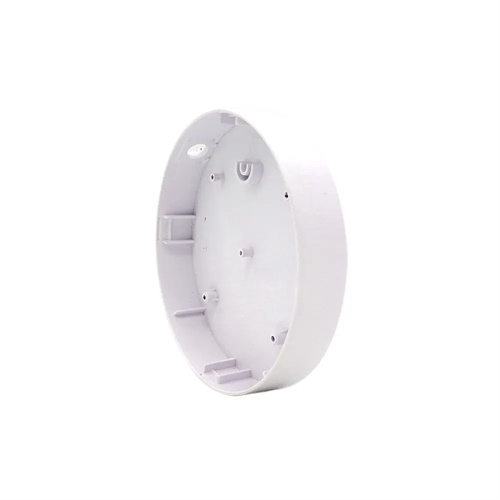Degradation of polymers during molding
Polymer degradation during the molding process refers to the breakage or chemical structural changes of polymer chains caused by external factors such as heat, mechanical forces, oxygen, and moisture. This process reduces the polymer’s molecular weight and mechanical properties, thereby affecting the quality and service life of the plastic part. Degradation not only causes cosmetic and performance defects such as surface roughness, discoloration, and embrittlement, but can also produce harmful gases, impacting the production environment and operator health. Therefore, a thorough understanding of the causes, types, and influencing factors of polymer degradation, and the implementation of effective preventive measures, are crucial to ensuring polymer molding quality.

Thermal degradation is the most common type of degradation in polymer molding, primarily caused by the high temperatures experienced during the molding process. When polymers are heated in equipment such as the barrel and mold, if the temperature exceeds their thermal stability limit, the molecular chains will break due to increased thermal motion. Polymers containing weak bonds (such as ester and ether bonds), such as polyvinyl chloride (PVC) and polyoxymethylene (POM), are particularly susceptible to thermal degradation. For example, when heated above 160°C, PVC releases hydrogen chloride gas, which not only discolors the material (from white to yellow or brown) but also corrodes the equipment. Furthermore, the hydrogen chloride gas further catalyzes the breakage of PVC molecular chains, creating a vicious cycle. The degree of thermal degradation is positively correlated with temperature and heating time. The higher the temperature and the longer the heating time, the more severe the degradation. Therefore, during the molding process, the barrel temperature and the residence time of the melt in the barrel must be strictly controlled to avoid exceeding the thermal stability range of the polymer.

Mechanical degradation occurs when polymers are subjected to intense mechanical shear forces during the molding process. During injection molding and extrusion processes, the polymer melt is sheared by components such as the screw, barrel, and nozzle, causing molecular chains to break due to forces such as stretching and twisting. This is particularly true when the melt flows at high speeds through narrow channels (such as gates and nozzles), where shear rates are extremely high, which can easily trigger mechanical degradation. The extent of mechanical degradation is related to the shear rate, shear duration, and molecular weight of the polymer. Higher molecular weight and longer molecular chains are more susceptible to shear breakage. Higher shear rates increase the forces exerted on the molecular chains, leading to more pronounced degradation. For example, during high-speed injection molding of polyethylene (PE), if the nozzle diameter is too small, the shear rate of the melt flowing through the nozzle increases dramatically, leading to molecular chain breakage and a 10%-20% decrease in the impact strength of the PE. Furthermore, mechanical degradation can synergize with thermal degradation. The heat generated by shearing can locally increase the melt temperature, accelerating thermal degradation.

Oxidative degradation is the degradation of polymers caused by chemical reactions with oxygen during the molding process. It often occurs simultaneously with thermal degradation and is also known as thermo-oxidative degradation. Weak links in the polymer chain, such as unsaturated bonds and side chains, react easily with oxygen to form peroxides, which in turn trigger chain breakage. This process is autocatalytic and intensifies as the reaction proceeds. Common polymers susceptible to oxidative degradation include polypropylene (PP) and natural rubber. These materials exhibit yellowing, crosslinking, or embrittlement when exposed to oxygen at high temperatures. For example, if the barrel seal during the PP molding process is poor, oxygen from the air can enter the melt, triggering oxidative degradation at high temperatures and significantly reducing tensile strength and elongation at break. Moisture can also exacerbate oxidative degradation. Certain polymers, such as polyamide (PA), are highly hygroscopic. Moisture at high temperatures reacts with the molecular chains, causing hydrolysis and promoting oxidation reactions.

Chemical degradation of polymers can also be caused by chemicals they come into contact with during the molding process, such as catalyst residues, impurities, and mold release agents. For example, residual vinyl chloride monomer from the polyvinyl chloride (PVC) synthesis process can decompose at the high temperatures of molding, releasing harmful substances. The acidic or alkaline components of certain release agents can react chemically with polymers, disrupting their molecular chain structure. Furthermore, for polymers containing additives (such as plasticizers, stabilizers, and colorants), incompatibility between the additives and the polymer can also trigger degradation. For example, the volatilization of plasticizers can alter the forces between polymer chains, accelerating chain breakage.

Preventing polymer degradation requires multiple approaches, including raw material pretreatment, process parameter optimization, and equipment maintenance. For raw material processing, polymers must be dried, especially for highly hygroscopic materials (such as PA and PC). Hot air drying or vacuum drying can be used to remove moisture and prevent hydrolysis and oxidative degradation. For materials susceptible to thermal degradation (such as PVC), heat stabilizers (such as lead stearate and organotin compounds) can be added to improve their thermal stability. Regarding process parameters, molding temperature and time should be appropriately set based on the thermal stability characteristics of the polymer. For example, the molding temperature for PVC should be controlled between 150-170°C, and the melt residence time in the barrel should not exceed 10 minutes. Screw speed and injection speed should be reduced to minimize mechanical shear forces and avoid localized high temperatures caused by shear heating. Equipment maintenance requires ensuring the tightness of the barrel and screw to minimize oxygen intrusion. Residual material in the equipment should be regularly cleaned to prevent degradation of long-standing material and contamination of new material. By taking these combined measures, polymer degradation during the molding process can be effectively inhibited, ensuring part quality.
